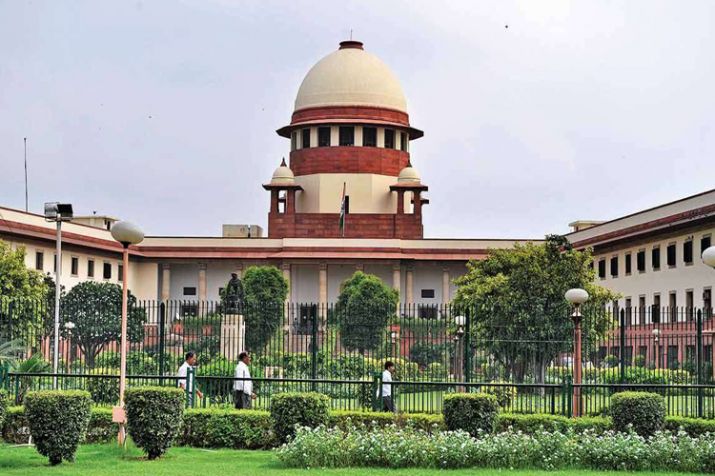Now Reading: SC: A Retrenched person cannot ask for re-employment by mere invoking of Section 25H of Industrial Disputes Act
-
01
SC: A Retrenched person cannot ask for re-employment by mere invoking of Section 25H of Industrial Disputes Act

SC: A Retrenched person cannot ask for re-employment by mere invoking of Section 25H of Industrial Disputes Act
A Division Bench of Supreme Court has set aside an application filed by special leave here on 02-01-2019 by stating that Section 25H of Industrial Dispute Act, 1947 (hereinafter referred as ID Act) cannot be a means to get re-employed once a person has been retrenched by the employer.
The ruling was given in Management of Barara Cooperative Marketing-cum-Processing Society Ltd. v Workman Pratap Singh wherein Supreme Court discussed the ground for invoking Section 25H of ID Act by a retrenched employer.
BRIEF FACTS OF THE CASE:
Management of Barara Cooperative Marketing-cum-Processing Society Ltd., a Cooperative Marketing Society is the appellant in this case and was the employer of Workman Pratap Singh. Workman Pratap Singh is the respondent in this case who used to work in the position of peon in the appellant’s company. On 01.07.1985 the respondent was terminated from his service by the appellant. The respondent referred the matter to the Labour Court in deciding the correctness of termination order. The Labour Court held that the termination is bad in law and awarded a compensation of Rs.12, 500/-. Aggrieved by the decision of Labour Court, the matter went to High Court of Punjab and Haryana at Chandigarh. The High Court dismissed their appeal and ordered to reinstate the employment and the employer has to pay compensation to the respondent.
After the decision given by High Court, the respondent file representation to the appellant praying that since the appellant has regularised the service of two peons, he has become entitled to claim re-employment in the appellant’s service in terms of Section 25H of ID Act. The parties referred the matter to the Labour Court for deciding whether the respondent is entitled to claim re-employment in the appellant’s service in terms of Section 25H of ID Act. The Labour Court held that the respondent is not entitled to claim any benefit such as re-employment in the appellant’s service under Section 25H of ID Act. Aggrieved by the decision of the Labour Court, the parties approached the High Court wherein the High Court directed re-employment of the respondent in the appellant’s service.
Unsatisfied with the decision of the High Court, aggrieved the parties sought to redress their grievance before the Supreme Court by filing an SLP.
DECISION OF THE SUPREME COURT: According to the Supreme Court there is no case made out by the respondent seeking re-employment in the appellant’s service on the basis of Section 25H of ID Act. The Supreme Court held that by accepting the compensation which was awarded to the respondent in lieu of his right to reinstatement in service, the issue came to an end. Moreover, Section 25H of ID Act has no application in this case.
The Court explained the applicability of Section 25H of ID Act. Section 25H of ID Act applies to cases where the employer has proposed to take into their employment any person to fill up the vacancies. It is at the same time, the employer is required to give an opportunity to the retrenched workman an offer him re-employment and if such retrenched workman offers himself for re-employment, he shall have preference over another person, who has applied for employment against the vacancy advertised. The object behind enacting Section 25H of the ID Act is to give preference to a retrenched employee over the other persons by offering them re-employment in the services when the employer takes a decision to fill up the new vacancies. Section 25H of ID Act is required to be implemented as per the procedure prescribed in Rule 78 of Industrial Dispute (Central) Rules,1957 which clearly provides that Section 25H of ID Act is applicable only when the employer decided to fill up the vacancies in their set up by recruiting persons. It provides for the issuance of notice to retrenched employee prescribed therein in that behalf. In order to attract the provisions of Section 25H of ID Act, it must be proved by the respondent that- (i) he was the retrenched employee; (ii) his ex-employer has decided to fill up the vacancies in their set up and therefore, he is entitled to claim preference over those persons, who have applied against such vacancies for a job while seeking re-employment in the services.
The Court held that in the present case, the subject matter of dispute is not retrenchment. The dispute relates to deciding the validity of termination order given to the respondent. the court further clarified that the respondent cannot invoke Section 25H of ID Act and seek re-employment by citing the case of another employee (Peon) who was already in employment and whose services were only regularised by the appellant on the basis of his service record in terms of the Industrial Disputes (Central) Rules.
For Full Judgment Refer:
[embeddoc url=”https://www.sci.gov.in/supremecourt/2014/16971/16971_2014_Judgement_02-Jan-2019.pdf” download=”all”]









